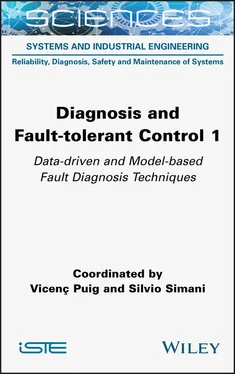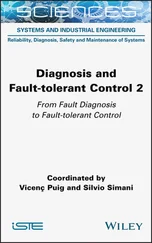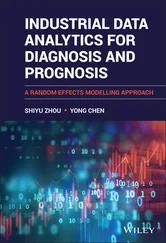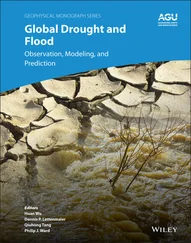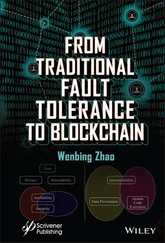246 219
247 220
248 221
249 222
250 223
251 224
252 225
253 226
254 227
255 228
256 229
257 231
258 233
259 234
260 235
261 237
262 238
263 239
264 240
265 241
SCIENCES
Systems and Industrial Engineering , Field Director – Jean-Paul Bourrières
Reliability, Diagnosis, Safety and Maintenance of Systems , Subject Head – Jean-Marie Flaus
Diagnosis and Fault-tolerant Control 1
Data-driven and Model-based Fault Diagnosis Techniques
Coordinated by
Vicenç Puig
Silvio Simani


First published 2021 in Great Britain and the United States by ISTE Ltd and John Wiley & Sons, Inc.
Apart from any fair dealing for the purposes of research or private study, or criticism or review, as permitted under the Copyright, Designs and Patents Act 1988, this publication may only be reproduced, stored or transmitted, in any form or by any means, with the prior permission in writing of the publishers, or in the case of reprographic reproduction in accordance with the terms and licenses issued by the CLA. Enquiries concerning reproduction outside these terms should be sent to the publishers at the undermentioned address:
ISTE Ltd
27-37 St George’s Road
London SW19 4EU
UK
www.iste.co.uk
John Wiley & Sons, Inc.
111 River Street
Hoboken, NJ 07030
USA
www.wiley.com
© ISTE Ltd 2021
The rights of Vicenç Puig and Silvio Simani to be identified as the authors of this work have been asserted by them in accordance with the Copyright, Designs and Patents Act 1988.
Library of Congress Control Number: 2021943898
British Library Cataloguing-in-Publication Data
A CIP record for this book is available from the British Library
ISBN 978-1-78945-058-3
ERC Code:
PE7 Systems and Communication Engineering
PE7_1 Control engineering
Vicenç PUIG1 and Silvio SIMANI2
1Institute for Robotics and Industrial Informatics, Polytechnic University of Catalonia, Barcelona, Spain
2Department of Engineering, University of Ferrara, Emilia-Romagna, Italy
There is an increasing interest in the theory and applications of model-based fault detection and fault diagnosis methods, because of economical and safety-related matters. In particular, well-established theoretical developments can be seen in many contributions published in the IFAC (International Federation of Automatic Control) Congresses and IFAC Symposium SAFEPROCESS (Fault Detection, Supervision and Safety of Technical Processes) since the seminal editions (Isermann and Ballé 1997; Isermann 1997; Patton 1999; Frank et al . 2000).
The developments began at various places in the early 1970s. Beard (1971) and Jones (1973) reported, for example, the well-known “failure detection filter” approach for linear systems.
A summary of this early development is given by Willsky (1976). Then, Rault et al . (1971) considered the application of identification methods to the fault detection of jet engines. Correlation methods were applied to leak detection (Siebert and Isermann 1976).
The first book on model-based methods for fault detection and diagnosis with specific application to chemical processes was published by Himmelblau (1978). Sensor failure detection based on the inherent analytical redundancy of multiple observers was shown by Clark (1978).
The use of parameter estimation techniques for fault detection of technical systems was demonstrated by Hohmann (1977), Bakiotis et al . (1979), Geiger (1982) and Filbert and Metzger (1982).
The development of process fault detection methods based on modeling, parameter and state estimation was then summarized by Isermann (1984, 1997).
Parity equation-based methods were developed initially by Chow and Willsky (1984) and then further developed by Patton and Chen (1994), Gertler (1991) and Höfling and Pfeufer (1994).
Frequency domain methods are typically applied when the effects of faults as well as disturbances have frequency characteristics that differ from each other and thus the frequency spectra serve as criterion to distinguish the faults (Massoumnia et al . 1989; Ding and Frank 1990; Ding et al . 2000; Frank et al . 2000).
The developments of fault detection and isolation (FDI) methods to the present time are summarized in books by Pau (1981), Patton et al . (2000), Basseville and Nikiforov (1993), Chen and Patton (1999), Gertler (1998) and Isermann (1994b) as well as in survey papers by Gertler (1988), Frank (1990) and Isermann (1994a).
Within IFAC, the increasing interest in this field was taken into account by creating first in 1991 a SAFEPROCESS (Fault Detection Supervision and Safety for Technical Processes) Steering Committee, which then became a Technical Committee in 1993. The first IFAC SAFEPROCESS Symposium was held in Baden–Baden (Germany) in 1991 (Isermann and Freyermuth 1992). The last edition was organized in 2018 in Warsaw (Poland). Another triennial series of IFAC workshops exist for “Fault detection and supervision in the chemical process industries”. Many other thematic workshops have been organized between 1992 and 2020.
Most contributions in fault diagnosis rely on the analytical redundancy principle. The basic idea consists of using an accurate model of the system to mimic the real process behavior. If a fault occurs, the residual signal (i.e. the difference between the real system and model behavior) can be used to diagnose and isolate the malfunction.
Model-based method reliability, which also includes false alarm rejection, is strictly related to the “quality” of the model and measurements exploited for fault diagnosis, as model uncertainty and noisy data can prevent an effective application of analytical redundancy methods.
This is not a simple problem, because model-based fault diagnosis methods are designed to detect any discrepancy between the real system and model behaviors. It is assumed that this discrepancy signal is related to (has a response from) a fault. However, the same difference signal can respond to model mismatch or noise in real measurements, which are erroneously detected as a fault. These considerations have led to research in the field of “robust” methods, in which particular attention is paid to the discrimination between actual faults and errors due to model mismatch.
However, the availability of a “good” model of the monitored system can significantly improve the performance of diagnostic tools, minimizing the probability of false alarms.
This book explains what a good model is, one that is suitable for robust diagnosis of system performance and operation. The book also explains how robust models can be obtained from real data. A large amount of attention is paid to the “real system modeling problem”, with reference to either linear or nonlinear model structures. Special treatment is given to the case in which noise affects the acquired data. The mathematical description of the monitored system is obtained by means of a system identification scheme based on equation error and errors-in-variables models. This is an identification approach that leads to a reliable model of the plant under investigation, as well as the estimation of the variances of the input–output noises affecting the data.
Читать дальше
